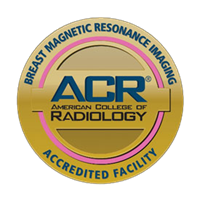Breast Cancer Screening and Diagnosis
Our team of breast radiologists and breast pathologists specializes in diagnosing breast cancer. Their proficiency enables them to define the precise features of your tumor so that our breast cancer care team can create a personalized treatment plan for you.
Together, breast radiologists, breast pathologists, breast surgical oncologists, breast medical oncologists and breast radiation oncologists determine which tests are needed for a definitive diagnosis. This multidisciplinary team develops the best breast cancer treatment options based on your tumor and your needs.
For women with dense breast tissue, we offer automated and handheld breast ultrasound, abbreviated and full breast MRI, 3D mammograms and contrast enhanced mammography.

How is breast cancer diagnosed?
Our breast cancer specialists are dedicated to providing comprehensive diagnostic services for patients with breast cancer.
- Experienced
We have the experience and expertise to provide the highest quality care. Our breast cancer specialists evaluate thousands of patients for breast cancer each year. - Specialized
Our team of radiologists and pathologists specializes in diagnosing breast cancer. Their proficiency enables them to define the precise features of a patient’s tumor so that our cancer care teams can create a personalized treatment plan for each patient. - Board-certified and fellowship-trained
Our board-certified, fellowship-trained radiologists specialize in breast disease diagnosis and offer the most advanced technologies and techniques available in the Kansas City region. Our comprehensive breast imaging services combine the latest techniques for noninvasive imaging with compassionate patient care.
Advances in breast imaging
Speaker 1: From the research bench, to the patient's bedside, this is Bench To Bedside, with your host, Vice Chancellor and Director of the University at Kansas Cancer Center, Dr. Roy Jensen.
Dr. Roy Jensen: October is breast Cancer Awareness Month. Currently, one in eight women in the US will be diagnosed with breast cancer in their lifetime. That's why early diagnosis and treatment are critical to surviving breast cancer. Thus, the importance of starting mammograms at age 40 and continuing to get them every year.
I'm Dr. Roy Jensen, Vice Chancellor and Director of the University of Kansas Cancer Center. And thanks for joining us for today's episode of Bench To Bedside. Many people are unaware that where you get your mammogram is extremely important. Not all mammograms are created equal. Our clinical partner, the University of Kansas Health System, finds early stage breast cancer at a rate that exceeds the national standard. Angela Garrison experienced this firsthand. It changed her diagnoses and ultimately, her outcome. Here's her story.
Speaker 3: It's been quite a year for Angela Garrison.
Angela Garrison: My treatment is done, this course has run, and I'm on my way.
Speaker 3: Even behind her face mask, you can see the joyful spirit that carried this mother of four and long time law enforcement officer, through her toughest times.
Angela Garrison: I found out about the breast cancer the week of Thanksgiving 2020.
Speaker 3: A diagnosis missed just months earlier when she went for her routine mammogram at her local imaging center, she's been going to for years. Her mammogram had come up negative, no sign of breast cancer, but a radiologist there detected what he thought was a suspicious nodule in her right lung. A follow-up appointment then revealed a mass in her right breast and thyroid, but a second mammogram at that imaging center, also came up negative for breast cancer.
That's when Angela decided to go to the University of Kansas Cancer Center, one of just 71 NCI designated cancer centers in the country, where she got a second opinion. Garrison was diagnosed with stage three breast cancer, and around the same time, stage one lung cancer.
Angela Garrison: Had Dr. Nagji only have been concerned about the lung nodule and not paid attention to the breast mass, it could have been a different story.
Speaker 3: Angela underwent surgery to remove the nodule in her lung in December, and a month later began chemotherapy for her breast cancer. COVID-19 safety protocols made it pretty lonely. So she communicated with her friends and family through painting.
Angela Garrison: I made the joke that it was my me time and that it was just like, a break for a couple hours a week, where I got to do what I wanted to do during a time that was pretty yucky.
Speaker 3: Garrison finished her chemotherapy in May and had her double mastectomy surgery in June, just in time to take on a new role of first time grandma. Garrison plans to have her breast reconstruction surgery by the end of this year. And by the way, while going through chemo, this 27 year veteran of the Kansas City Police department was also enrolled in her final semester of grad school and graduated this past summer with her master's degree in criminal justice.
Dr. Roy Jensen: With me, to talk about breast cancer and screenings is Dr. Onalisa Winblad, Director of breast imaging at the University of Kansas Health System. Dr. Winblad, you are a fellowship trained breast radiologist. Can you explain what that means to our audience and why that is so important?
Dr. Onalisa Winblad: Absolutely. I completed a breast imaging fellowship after my general radiology residency and with an intensive year of focus on breast imaging and breast biopsy procedures. During that fellowship year, I gained more experience and knowledge and expertise than would be expected from someone, completing a general radiology residency program. And this sub-specialty training, really prepared me and equipped me to be an amazing breast radiologist, who not only can identify those abnormalities, but also recognize normal and make sure that our patients are receiving the best here at KU.
Dr. Roy Jensen: So Dr. Winblad, a recent study showed that 43% of breast cancer patients who got a second opinion at an NCI designated cancer center, had their diagnosis changed. First of all, does that surprise you? And second of all, why is a second opinion on a breast cancer diagnosis so important?
Dr. Onalisa Winblad: There have actually been several studies that have demonstrated the importance of a second opinion from a sub-specialist for cancer patients. And quite a few of these studies have actually focused on breast cancer patient second opinions specifically. When a patient is diagnosed with breast cancer, their treatment plan and their surgical management is largely based on the imaging findings and also the specific pathologic diagnosis.
So the breast pathologist and the breast radiologist are actually quite integral in ensuring that patient receives the right diagnosis and the best care plan from the get-go. At KU, our patients who come to us with a new cancer diagnosis, our breast radiologists actually review those patients imaging. And it's quite often, that we make additional findings that change their management, which is really important for their care. We want our patients to have the right surgery, the right therapy, the right care from the very get-go.
Dr. Roy Jensen: So Dr. Winblad, when patients come from outside facilities, in the situation you just described, to get second opinions about either abnormal breast imaging or biopsies, how often do we find differences or changes from that initial original diagnosis?
Dr. Onalisa Winblad: Quite often. Not only are second opinions really important for cancer patients, but we frequently change the management for patients who come to KU seeking second opinions for either a biopsy recommendation or abnormal breast imaging. And quite often, we're actually telling these patients that their breast imaging is normal and they don't need a biopsy, or maybe they don't even need follow up breast rest imaging, apart from screening.
But we're very often making additional findings or even things such as changing the type of biopsy recommendation or the type of imaging follow up. We do these second opinions every day at KU and very frequently have a change in management or a change in care that really helps put the patient on the best path.
Dr. Roy Jensen: If you're just joining us, we're here with Dr. Onalisa Winblad, Director of breast imaging at the university of Kansas Health System. Remember to share this link with people you think might benefit from our discussion. Use the hashtag, Bench To Bedside. So Dr. Winblad, just like everything else in medicine these days, COVID seems to have had, rear it's ugly head. Could you tell us specifically how COVID-19 has actually impacted breast cancer screenings?
Dr. Onalisa Winblad: Yeah. COVID-19 has had a huge impact on breast cancer and breast cancer screening. Millions of cancer screening exams were missed during this pandemic. In April 2020, we saw a 90% decline in breast cancer screening exams, and this can have devastating consequences. This reflects many missed opportunities for early detection of breast cancer on mammogram and instead, we're seeing some patients present with a delayed diagnosis and larger tumors or tumors that may have spread elsewhere from the breast, and those are harder to treat and have worse outcomes.
Dr. Roy Jensen: So I know that screening recommendations have changed as more data comes out. Are there any updates regarding breast cancer screening recommendations that you feel are particularly important to discuss with our audience?
Dr. Onalisa Winblad: There are a few updates. We continue to recommend all women have a breast cancer screening mammogram every year, beginning at age 40. And this is regardless of your COVID-19 vaccination status. We want you to still come in and have your regular screening mammogram, and we want you to continue those screening mammograms every year, even past age 74, if you're in good health.
A few new recommendations that have come from the American College of Radiology and the American Society of Breast Surgeons, and those are related to risk assessment for breast cancer. We now actually recommend that all women have a risk assessment for breast cancer by the age of 30. And this helps us to recognize those women who are at a higher lifetime risk for developing breast cancer, based on breast cancer risk factors.
And that's important because for those patients, we actually recommend they start screening before age 40, and they may need to have an additional type of screening exam beyond that of just a mammogram. So having a formal risk assessment is becoming more and more important as we're learning more about high risk patients and high risk screening.
Dr. Roy Jensen: So it's been estimated that anywhere from 40 to 50% of women between the ages of 40 and 74, have so-called dense breast tissue. And could you tell us what is dense breast tissue and why do those particular women seem to have an increased risk for breast cancer?
Dr. Onalisa Winblad: So dense breast tissue is very common. As you said, nearly half of women who are of screening age have dense breast tissue, so it's normal. It's nothing to be alarmed by dense breast tissue is actually something that's diagnosed by a radiologist who reads your screening mammogram. And so it's very normal, but it's important for two reasons.
So number one, we know that patients who have dense breast tissue and more fibroglandular tissue in their breasts have a higher lifetime risk of developing breast cancer as compared to women that do not have dense breast tissue. And two, it's very difficult to find breast cancer on a mammogram in women with dense breast tissue.
So because of those two reasons, we offer supplemental screening exams for women with dense breast tissue. We still recommend those women have their regular annual screening mammogram, but we also offer those patients additional supplemental screening exams.
Dr. Roy Jensen: So obviously, mammography gets the lion share of the attention when it comes to breast screening, but what are some supplemental imaging techniques that can be used for breast cancer screening? And specifically, what do we offer here at the KU Cancer Center
Dr. Onalisa Winblad: At KU, we actually offer the largest variety of supplemental screening exams in the Kansas City area. For women with dense breast tissue, we offer two types of ultrasound screening exams, the traditional handheld breast ultrasound exam, and also our automated breast ultrasound exam. You may have heard of it as ABUS. We also offer a new type of breast MRI exam for patients with dense breast tissue, and it's called abbreviated breast MRI. And it's just a faster type of MRI exam with improved access for patients.
And for our high risk patients, we also recommend supplemental screening exams and our high risk patients are those women that have a 20% or greater lifetime risk of cancer, based on a formal risk model. And for these women, we routinely recommend annual screening MRI, in addition to the annual screening mammogram. And we offer two types of MRI exams, both our traditional breast MRI exam, as well as our abbreviated fast MRI exam. And this really provides the best access for our high risk patients to get a supplemental screening exam, which is so important in this population of women.
Dr. Roy Jensen: So Dr. Winblad, what would you like most for our listeners to take away from today's program?
Dr. Onalisa Winblad: I would say, this is the year to prioritize your health. Don't delay these critical cancer screening exams. If you are 40 or older, make sure you're up to date on your screening mammogram, regardless of your COVID vaccination status. If you are younger than 40, talk with your healthcare provider and ask, find out what your breast cancer risk factors are and see if you need to start screening at age 40 or maybe even earlier.
Dr. Roy Jensen: Well, thank you, Dr. Winblad. That's it for today. To learn more about breast screenings or to schedule one online, please visit kansashealthsystem.com/mammogram. Join us next time for Bench To Bedside. Thanks for watching. Subscribe to our Bench To Bedside podcast, now, everywhere podcasts are available.
Breast cancer screening
Mammograms (X-ray images of the breast) are the most common screening test for breast cancer. 3D mammograms are the most advanced technology available for mammogram screening. We use digital mammograms, which provide a clear 3D image to show any abnormalities that may need further evaluation. Your doctor may suggest a mammogram as a screening test even if you don’t have any symptoms of breast cancer. Mammograms can show cysts, lumps or breast cancer even before you can feel them.
There are 2 types of mammograms:
- Screening mammograms help identify breast tissue changes in women without any signs of breast cancer. The University of Kansas Cancer Center recommends that annual mammogram screenings start at age 40.
- Diagnostic mammograms help your doctor diagnose abnormal changes in breast tissue, such as a lump or a change in breast size or shape. Diagnostic mammograms include more images than screening mammograms. Your doctor may also use a diagnostic mammogram to further enhance images that appeared in a screening mammogram.

Your doctor may include these imaging tests to help diagnose your breast cancer:
- 3D mammogram uses compression and X-rays to create 3D images of your breast. 3D mammograms, which we recommend to all of our patients, make it possible for radiologists to detect the difference between cancerous and noncancerous breast tissue, especially in dense breast tissue.
- Ultrasound helps determine if a suspicious area is fluid-filled (a cyst) or solid (a mass or tumor). If the area is solid, your doctor may follow-up with a biopsy to check for breast cancer cells.
- MRI (magnetic resonance imaging) can further clarify other imaging test results to show whether an abnormality found on a 3D mammogram is solid.
- Abbreviated breast MRI is a sophisticated, highly sensitive screening exam that is used to detect cancer at a very early stage. It is commonly used in people who are at high risk for breast cancer.
- Whole breast screening ultrasound evaluates dense breast tissue and those at higher risk for breast cancer in combination with a 3D mammogram.
If diagnostic imaging tests indicate a breast abnormality, you may require a breast biopsy. Biopsy involves removing a small sample of tissue through one of several techniques. The choice of technique depends on the location and quality of the tissue your doctor needs to examine:
- Core needle biopsy: Takes a larger tissue sample for a definitive diagnosis. This procedure requires local anesthesia and involves withdrawing a thin cylinder from the sample area using a hollow needle.
- Fine needle aspiration: Your doctor inserts a very thin needle into the sample area of the breast to remove fluid and cells for a pathologist to examine.
- Image-guided core needle biopsy: Because it is often impossible to locate a suspicious area through touch, our radiologists use ultrasound, stereotactic (mammographic) imaging or MRI to guide tissue removal using a hollow needle. These are minimally invasive, highly accurate procedures that offer faster healing.
- Surgical biopsy: When imaging and biopsy techniques don’t provide enough information to diagnose or rule out breast cancer, you may require surgery to remove all or part of a suspicious mass.
Pathologists who specialize exclusively in breast cancer examine the tissue samples after they are collected. The pathologist’s findings are critical to determining the best treatment for your cancer. They work closely with your care team, providing consultation to specialists.

Genetic testing and counseling
Genetic counselors at our nationally recognized cancer center identify and manage cancer risk through genetic testing and risk assessment.
Start your path today.
Your journey to health starts here. Call 913-588-1227 or request an appointment at The University of Kansas Cancer Center.